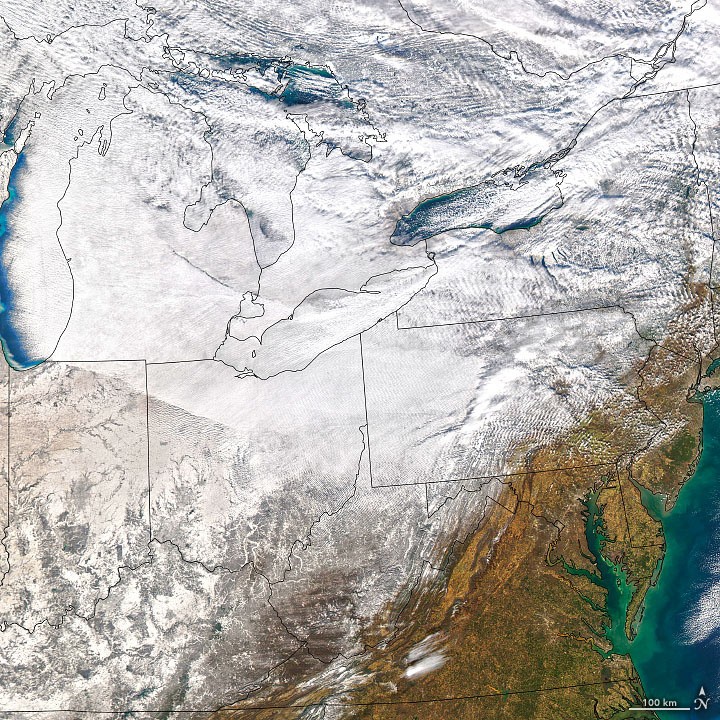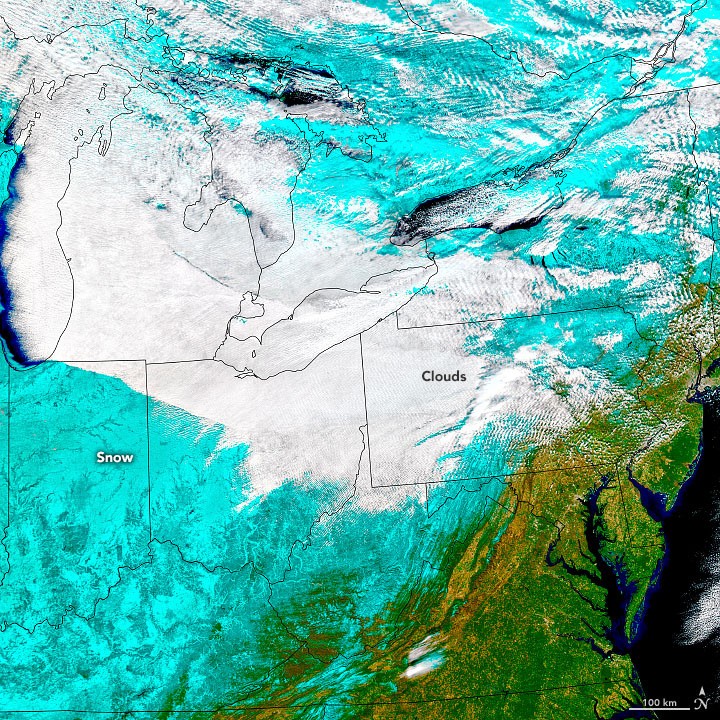During the Christmas season, a strong Arctic cold front devastated the Midwest and the eastern part of the United States. Intense volumes of lake-effect snow were also brought by the storm, along with deadly blizzard conditions in some locations and dangerously low temperatures in others.
NASA calls this a "once-in-a-generation" storm as it unleased strong winds and snowfall that caused power blackouts, transportation problems, and traffic accidents, and has claimed the lives of at least 60 people.

Lake-effect Snow
The space agency's Aqua satellite's Moderate Resolution Imaging Spectroradiometer (MODIS) recently captured satellite images of this storm on Christmas day.
In Lackawanna, New York, winds gusted as high as 79 miles per hour (127 kilometers per hour). According to data from the National Weather Service, winds exceeded 50 miles per hour in other states.
NASA explains that lake-effect snow can be created by the bands of clouds that stream off the lakes and are formed when cold air touches open water.
In most storm-affected locations, snowfall totals stayed below 5 inches (13 cm), while lake-effect snow-caused totals in upstate New York municipalities east of Lake Ontario and Lake Erie-including Buffalo-to soar past 50 inches.
Early winter storms are notorious for dropping enormous amounts of snow in these regions because the lakes frequently haven't frozen over yet.
The second image employs an integration of both visible and shortwave infrared light (bands 7-2-1) to differentiate clouds (white) from snow and ice.

Wave clouds most likely contributed to the cloud's ripple appearance. These clouds usually develop when air is driven higher by hills and mountains, such as the case in the Appalachians, according to NASA.
The air starts to oscillate as it descends due to gravity, which is what generates the waves. When there is sufficient moisture in the air, clouds frequently develop on the chilly crests of waves.
Bomb Cyclone
An abrupt decrease in the pressure of at least 24 millibars over the course of a day is known as a "bomb cyclone."
This can occur when the air over warm ocean waters and cold air masses collide. This quickly intensifying weather system is also known as bombogenesis, which produces what is commonly referred to as a bomb cyclone.
NASA reported that there was record snowfall in some communities near the Great Lakes combined with deadly blizzard conditions.
The catastrophic winter storm has claimed at least 60 lives nationwide, as per ABC News' report.
Local authorities said 38 individuals have perished in western New York as a result of the lake-effect blizzard.
According to Mark Poloncarz, the executive of Erie County, 37 of the fatalities in New York occurred in the region that includes Buffalo. Officials indicated that one storm-related death was reported in the nearby Niagara County.
Related Article : NASA Artemis: Orion's Callisto Tech Demo Shows iPad Use, Alexa Voice Command Possible-Send Messages to the Moon

![Apple Watch Series 10 [GPS 42mm]](https://d.techtimes.com/en/full/453899/apple-watch-series-10-gps-42mm.jpg?w=184&h=103&f=9fb3c2ea2db928c663d1d2eadbcb3e52)



